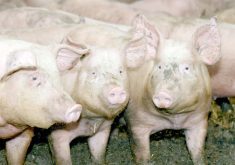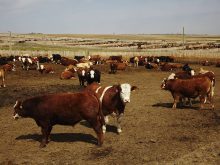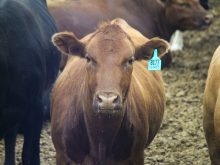Terrorism in agriculture and the environment has already cost North America more than $120 million.
“Terror attacks on North American soil have been going on for years,” said John Lewis of the counterterrorism division of the Federal Bureau of Investigation in the United States.
Lewis attended the recent Farm Animal Council of Saskatchewan annual conference in Saskatoon that dealt with the subject of agricultural terrorism.
He told the participants that in the wake of Oklahoma City, 9-11 and increased bombings and terror attacks around the world, governments and law enforcement have shifted their views.
Read Also

Lending policy still focused on primary producers: Farm Credit Canada
Farm Credit Canada said it has not changed its business practices and remains committed to supporting all producers, after a report from an Ottawa-based media outlet claimed otherwise.
U.S. authorities no longer think of extreme animal and ecology rights activists as protesters. They are now considered to be terrorists and the laws governing animal rights are being amended to reflect this new perspective.
Lewis cited more than 1,000 attacks on property related to these homegrown terrorist cells. He said regular harassment of researchers and corporate officials has resulted in more than 150 FBI investigations across the U.S.
Of those groups being investigated, the most aggressive are the Animal Liberation Front and its sister organization, the Earth Liberation Front.
Lewis said these groups have caused millions of dollars in damage using their favourite tool, the match, but so far they have yet to cause a human death.
“They are starting to turn up the rhetoric and have begun publicly suggesting that the assassination of leading researchers or company officials in the biological or food processing industries are options to further their causes,” he said.
The two groups’ causes include ending meat processing, urban expansion into wild or agricultural lands, logging, plant and animal genetics research that involves genetic modification and the use of animals in the development of human vaccines or disease treatment techniques.
“These extremist cells, often small groups of less than 10, are difficult to investigate.”
Lewis said the groups maintain loose links to mainstream animal rights groups.
“They have some common goals with very different methods.”
The American experience is different than the Canadian one so far, Lewis said. But the lack of a rigid border when it comes to most food and livestock trade means that what happens in the U.S. will eventually be a problem north of the 49th parallel.
Lewis doesn’t limit the threat to eco-terrorist groups. He said the same terrorists that are attacking western targets worldwide are considering attacks on food systems, livestock and crops. He said these are relatively easier targets for religious or geo-political terrorists looking to inflict economic or social instability.
The threat of inoculating the North American cattle herd with diseases such as foot-and-mouth or spreading one of the 49 plant diseases the FBI have identified as infectious threats to crops are considered “very real.”
Lewis said the FBI is beginning to work with the RCMP to develop intelligence on the Canadian side of the border about terror threats in this country.
He told those attending the FACS meeting that diseases don’t recognize borders.
“An economic injury to consumer confidence in the safety of the food supply doesn’t either,” he said.














